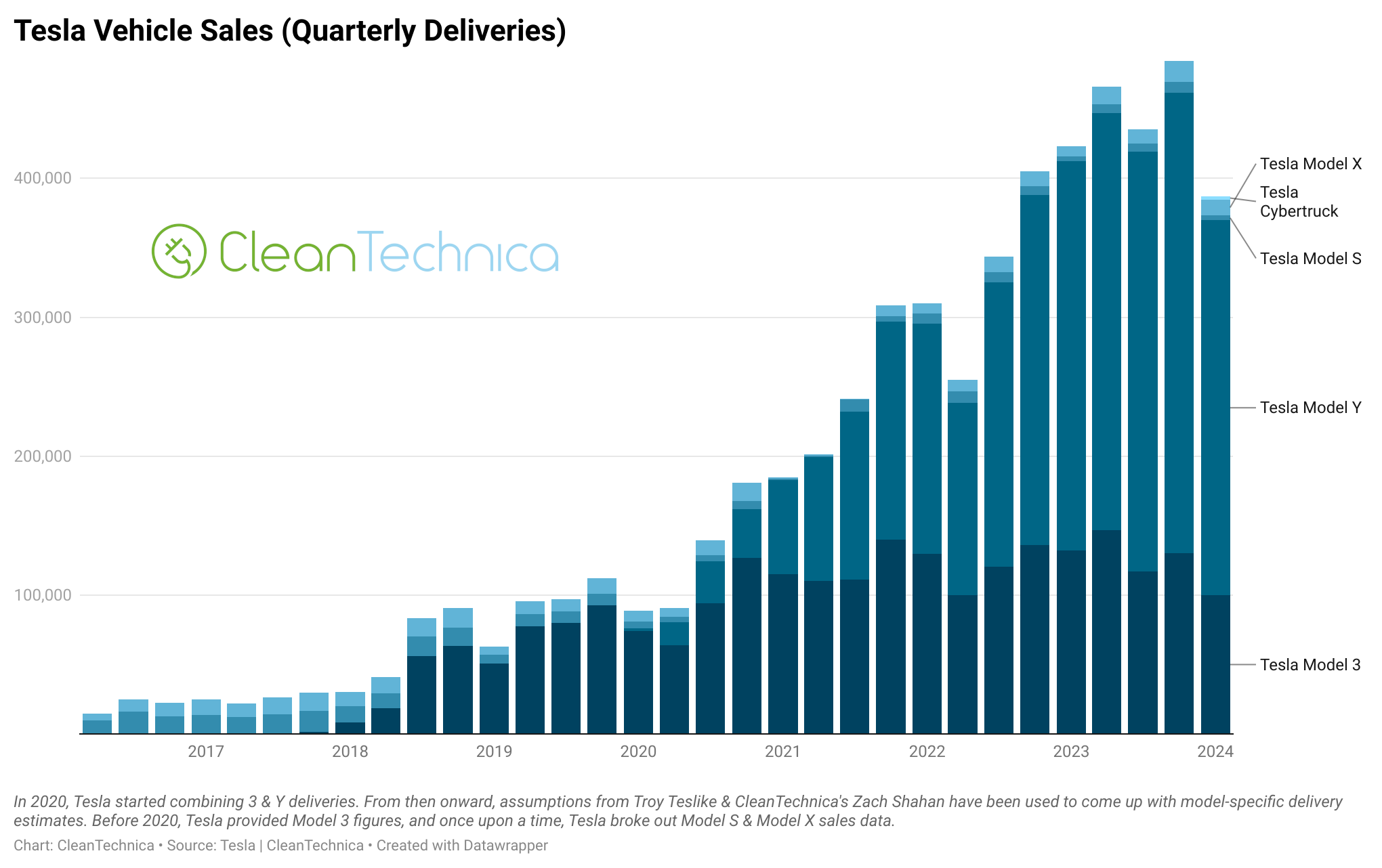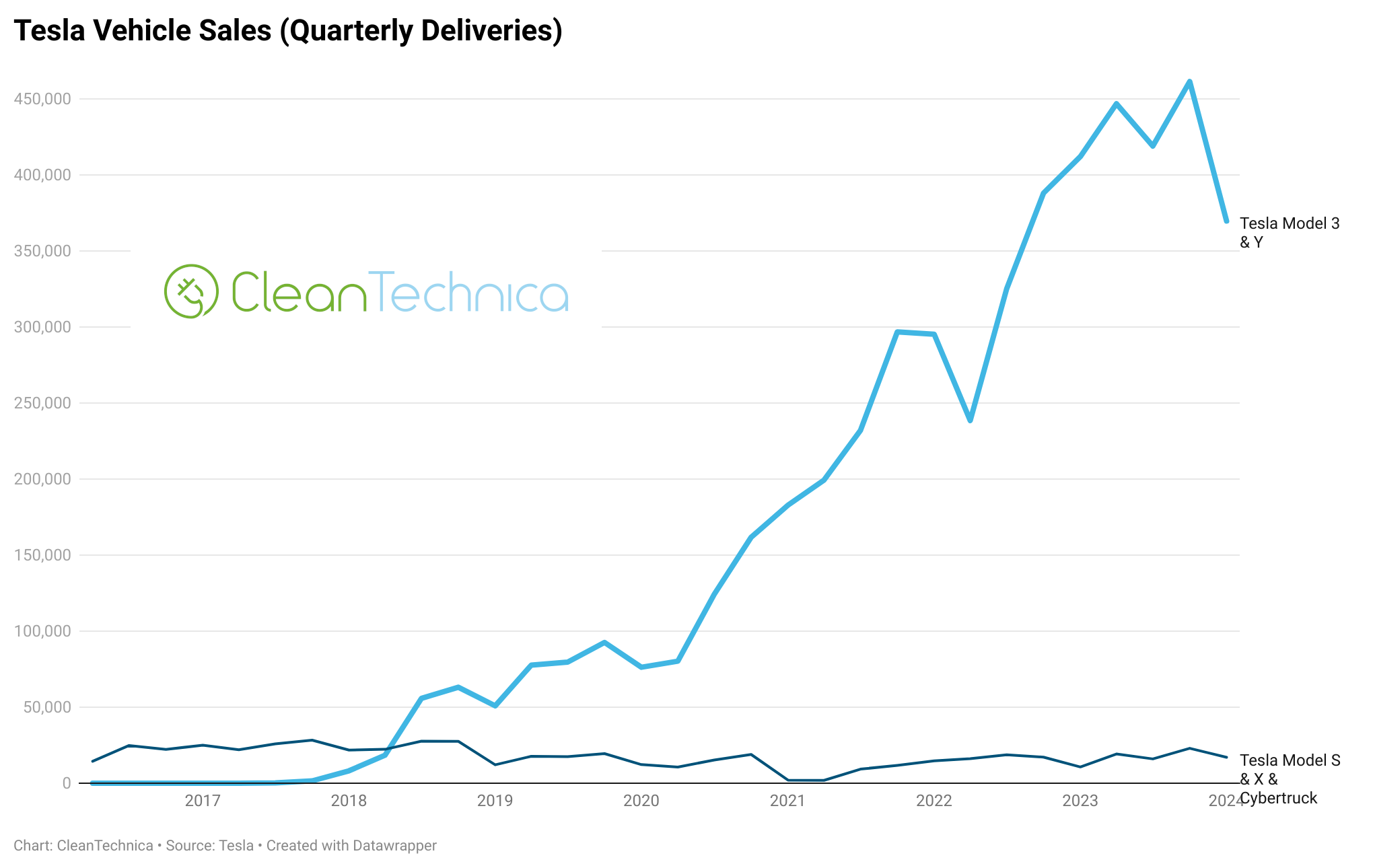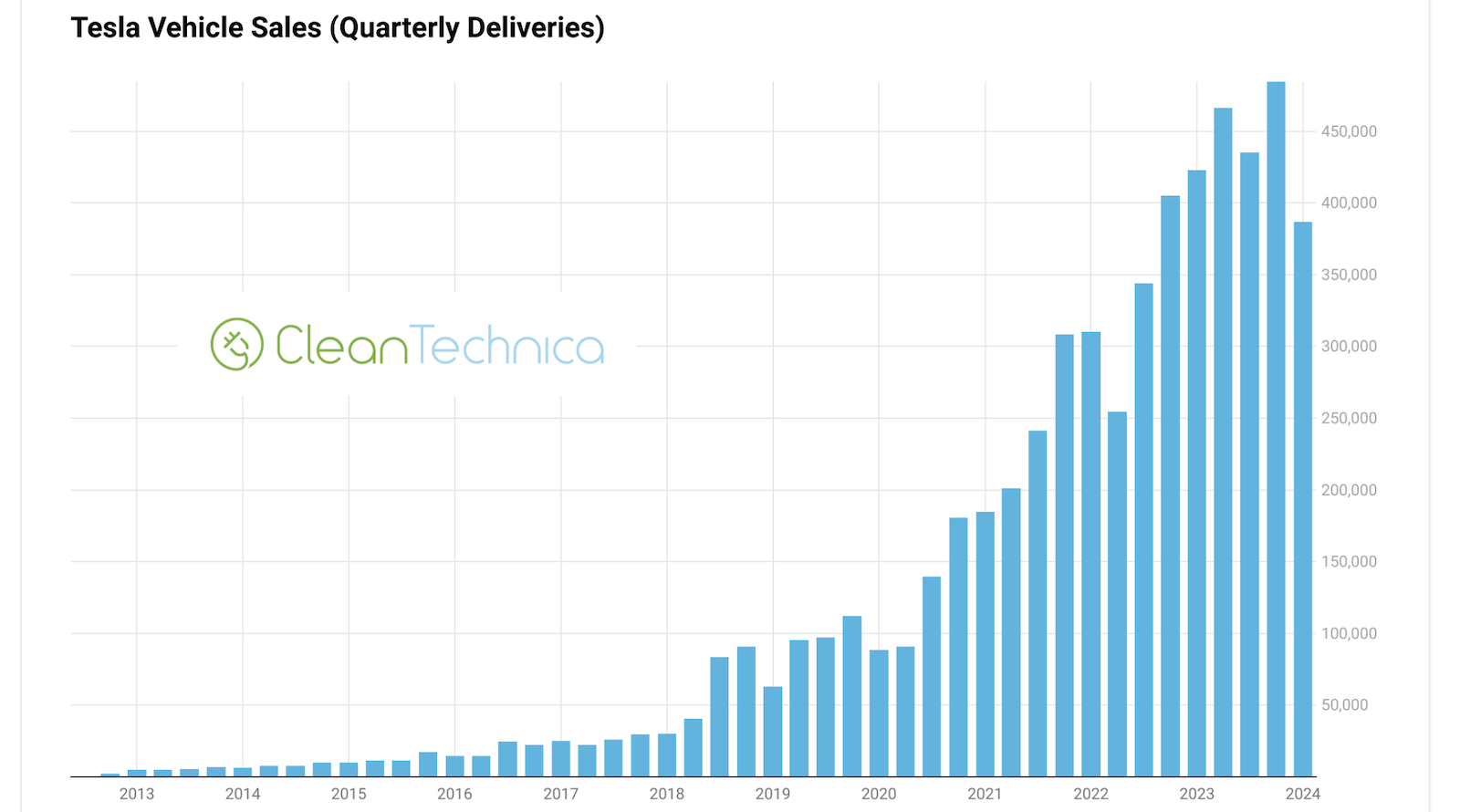As you may have noticed, Tesla saw a significant drop in sales in the first quarter. In fact, it could be described as a crash. The following charts illustrate this, and if you’re a Tesla enthusiast (or investor), you might find them concerning.
After examining each chart and providing some commentary, we will circle back to the ongoing discussion that has been unfolding for the past 6 months or longer — a conversation that dates back to Tesla’s first Model S delivery in 2012. (It’s hard to believe that was already 12 years ago — time flies, but it also reflects the evolution of Tesla throughout the years.)

Starting with the data, there is indeed a significant drop in sales. It marks the lowest sales quarter since Q3 2022. The key question now is whether this decline mirrors the pattern observed in Q2 2022, suggesting a substantial rebound ahead, or if it signals a different trajectory for Tesla’s future.

Breaking down the figures by model (based on informed estimates), it becomes evident that the bulk of Tesla’s growth and potential lies in two models — the Model Y and Model 3. As we’ve emphasized before, Tesla needs to diversify its model lineup. Competing automakers in China continually introduce new models, putting Tesla at a disadvantage in the largest EV market worldwide.

Examining the data through a different lens, as shown in the line graph, it’s intriguing to observe the stagnation or decline in sales for various models. It’s important to note that these figures are estimates since Tesla doesn’t disclose individual model sales or production numbers.

Based on official Tesla data, which combines Model 3 and Model Y sales and groups Model S, Model X, and Cybertruck sales together, we observe relative stability in the latter models, albeit significantly lower compared to the Model 3 and Model Y. Additionally, the Model Y and Model 3 experienced a decline in sales.




The above charts depict cumulative sales figures. In response to the sales dip in Q1 2024, one might be inclined to view these charts as a testament to Tesla’s impressive growth and accomplishments in a short period. Indeed, Tesla has achieved remarkable sales volumes over the past three years. However, it raises questions about the market saturation for Tesla in 2024. Is the pool of potential Tesla buyers the same as in 2023? Can we expect the same level of organic growth as witnessed in the past? How many early adopters from previous years are now seeking an upgrade? These are critical factors to consider when assessing Tesla’s future.
Recently, there have been discussions about Tesla’s stock and the expected sales growth in the upcoming quarters and years. The data from Q1 clearly indicates a decline in sales, with Tesla attributing it to various factors like the production ramp of the updated Model 3 and disruptions due to external events. However, it’s worth noting that Tesla has ramped up its marketing efforts and promotions, following significant price reductions that have impacted its profit margins. It’s evident that Tesla is facing challenges in stimulating consumer demand, as evidenced by its aggressive marketing campaigns and outreach activities to existing owners.
Recent reports indicate a decline in consideration scores for Tesla — a key metric indicating the percentage of potential buyers willing to consider a Tesla. This further underscores the challenges that Tesla is currently facing in attracting new customers.
While Tesla’s sales figures are still impressive, with nearly 387,000 deliveries of just two mass-market models, the question arises about the company’s growth potential without diversifying its product lineup. With the Model Y already surpassing other vehicle models in sales, there are concerns about sustaining this growth trajectory. It’s essential to consider the possibility of a sales decline if the demand for new models fails to keep pace with production.
This is not a critique of Tesla’s achievements, which have been remarkable. However, it’s crucial to acknowledge that past successes do not guarantee future outcomes. The landscape is constantly evolving, and Tesla must adapt to changing market dynamics and consumer preferences.
As we reflect on Tesla’s journey since the launch of the Model S in 2012, we must exercise caution in predicting its future trajectory. While the past growth has been extraordinary, uncertainties remain, and it’s vital to approach the future with an open mind.
For more interactive versions of the charts discussed above, click the links below:

